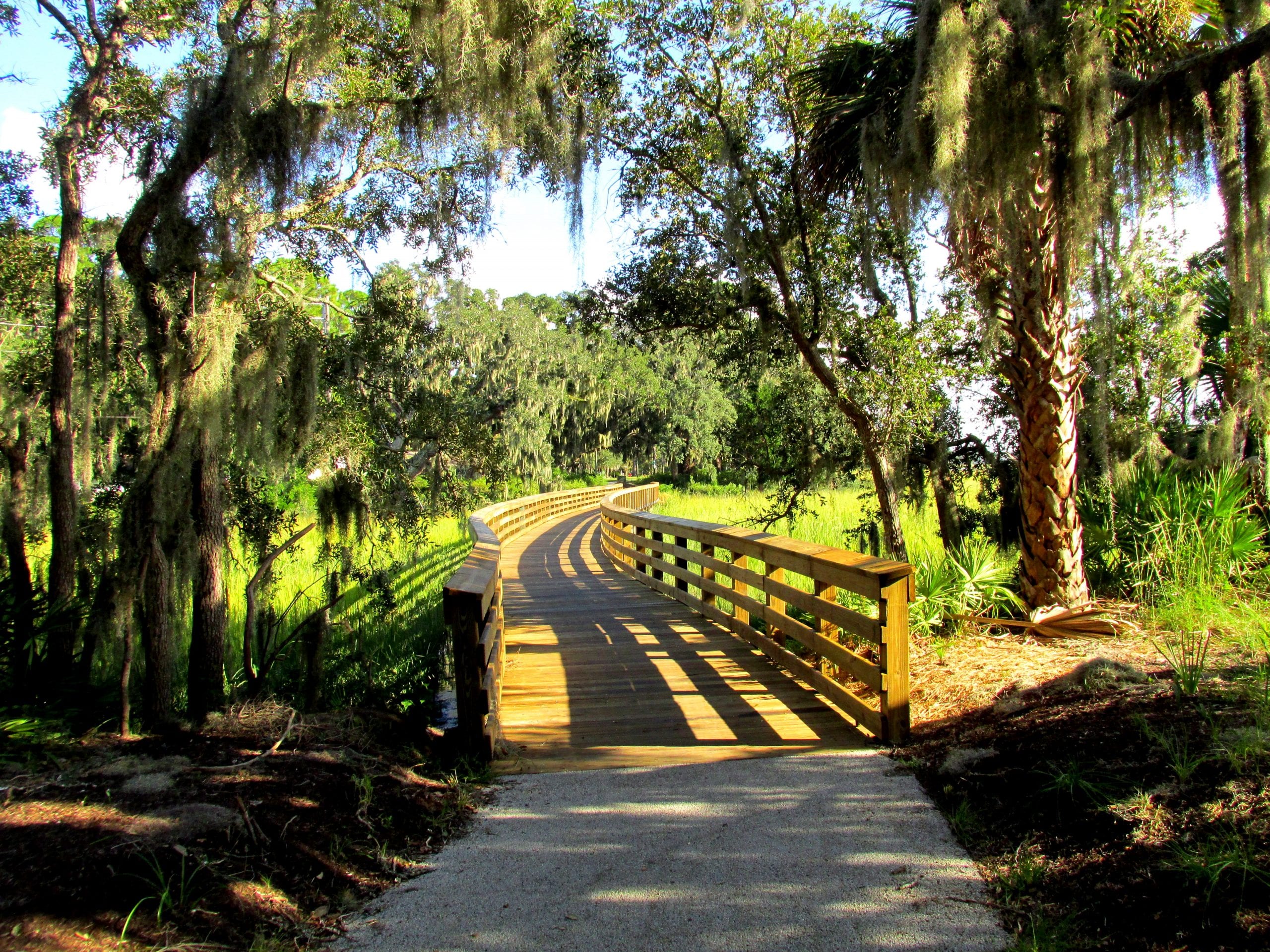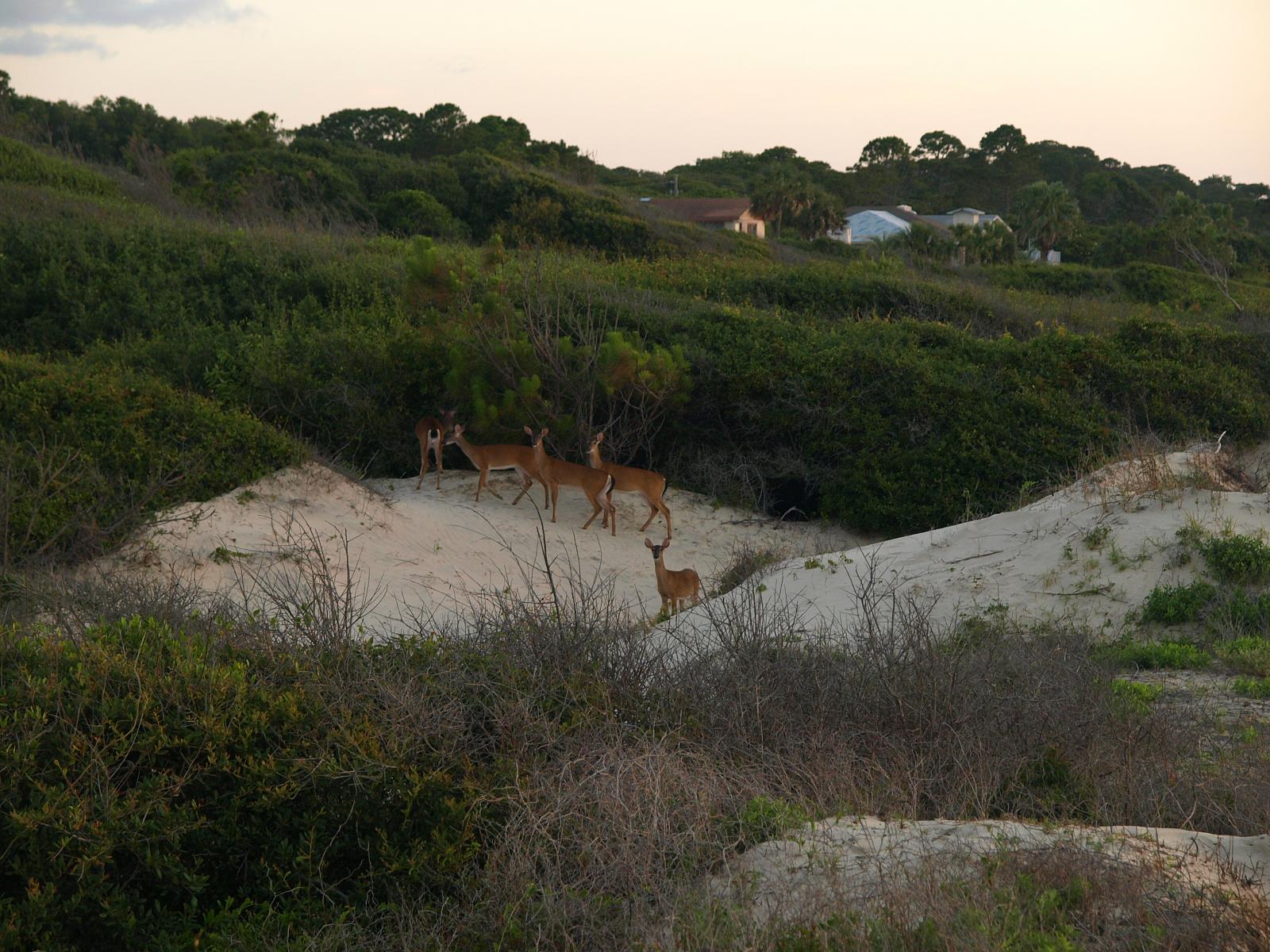I lived in Brunswick, Georgia for three years before moving up to the University of Georgia for grad school. Every chance I got, I would make the short drive to Jekyll Island to hike around the park's maritime forests and spend time on the beach. Fittingly called Georgia's Jewel, it truly is an amazing spot. A nature lover, like me, can find a huge variety of plants and wildlife: from live oaks and cabbage palms to alligators and sea turtles. And deer – way too many deer, which unfortunately are wreaking havoc on the island's ecosystem.

Now, you may be wondering how there can be such a thing as too much wildlife, especially in a park. But, think about Jekyll's ecosystem as you would your car: if all the gauges, coils, and valves are in the proper numbers and working order, it'll serve its purpose of moving you from location to another. However, remove a spring, add one too many pumps, or allow an axel to rust and it may not even be able to start. An ecosystem works in much the same way: remove a keystone species or add an extra ecosystem engineer, and the whole system can go awry.
White-tailed deer, the species found on Jekyll, typically are an important herbivore species, helping suppress fast-growing plants and feeding large predators. However, their numbers have exploded throughout the eastern United States and especially on Jekyll island. A survey conducted in 2011 by the Georgia Department of Natural Resources (DNR) found there were 80 deer for every square mile (the entire island is about 8.9 square miles, which means there's over 700 deer on Jekyll). DNR biologists determined the island could only support a healthy population of 30 deer per square mile.
The reasons for this population increase is most likely due to a lack of predators. While human hunters currently represent the most important predation source for deer, hunting is banned on the island. Most natural predators have had their numbers drastically reduced in the eastern United States, although bobcats were recently sighted and coyotes have been expanding their range and may show up on Jekyll in the near-future. Another reason for the population increase is likely linked to Jekyll's state as being a human-influenced park. Only 65% of the park is undeveloped, meaning the rest is a mix of commercial and suburban developments. Deer thrive in this type of partially-disturbed habitat.
The problems on Jekyll caused by deer are largely ecological in nature. Deer require high quality forage, but coastal plants tend not to be the best for herbivores since they're adapted to handle the presence of saltwater. So, deer tend to have to eat large amounts of plant matter to get the nutrients they need. They first target the most edible plants, such as oak and hickory saplings, green briars, honeysuckles, and muscadine vines. Once those are gone, they move on to tougher forage plants, like grasses. This leads to fewer of the palatable plant species and more of the non-palatable, altering the plant communities, which in turn alters what other organisms can exist in those habitats. There are fears the nesting and foraging habitats of songbirds and neotropical migrants will be too altered for these species to use. In addition, the health of the deer suffers, as they compete with each other over sparse and under-nutritious forage.

To help correct these problems, DNR biologists recommended allowing hunting or hiring trained sharpshooters to help control the numbers of deer. Unfortunately, some well-intentioned, yet misguided, animal lovers protested the recommendations. The Jekyll Island Authority relented to their demands and agreed to spend $150,000 on a four-year study that would be much more comprehensive than the DNR survey; it is scheduled to end in 2020.
While it's almost never a bad thing to have a complete picture before enacting some policy or program, the original DNR survey was sufficient to understand the current deer situation on Jekyll. Other surveys have returned with similar results, and Jekyll's deer situation is not unique. That said, even in the face of some uncertainty, precautionary management is often the best course of action (think climate change). In the meantime, the overpopulation of deer will likely continue to cause problems for the island's ecosystem and may irrevocably change it for the worse.
About the Author
 A transplant from Virginia (Hoos!), Greg Evans is a grad student at UGA, finishing up a Master’s in Plant Biology and beginning a Master’s in Ag Business. He enjoys boxing, board games, and gardening. Greg currently serves as an Associate Editor for the Athens Science Observer, as well as the Athens Science Alliance Liaison. He can be reached at gevans@uga.edu and followed on Twitter @WeedyInvasive. More from Greg Evans. A transplant from Virginia (Hoos!), Greg Evans is a grad student at UGA, finishing up a Master’s in Plant Biology and beginning a Master’s in Ag Business. He enjoys boxing, board games, and gardening. Greg currently serves as an Associate Editor for the Athens Science Observer, as well as the Athens Science Alliance Liaison. He can be reached at gevans@uga.edu and followed on Twitter @WeedyInvasive. More from Greg Evans. |
About the Author
- athenssciencecafehttps://athensscienceobserver.com/author/athenssciencecafe/April 17, 2020
- athenssciencecafehttps://athensscienceobserver.com/author/athenssciencecafe/April 12, 2020
- athenssciencecafehttps://athensscienceobserver.com/author/athenssciencecafe/April 3, 2020
- athenssciencecafehttps://athensscienceobserver.com/author/athenssciencecafe/March 30, 2020







